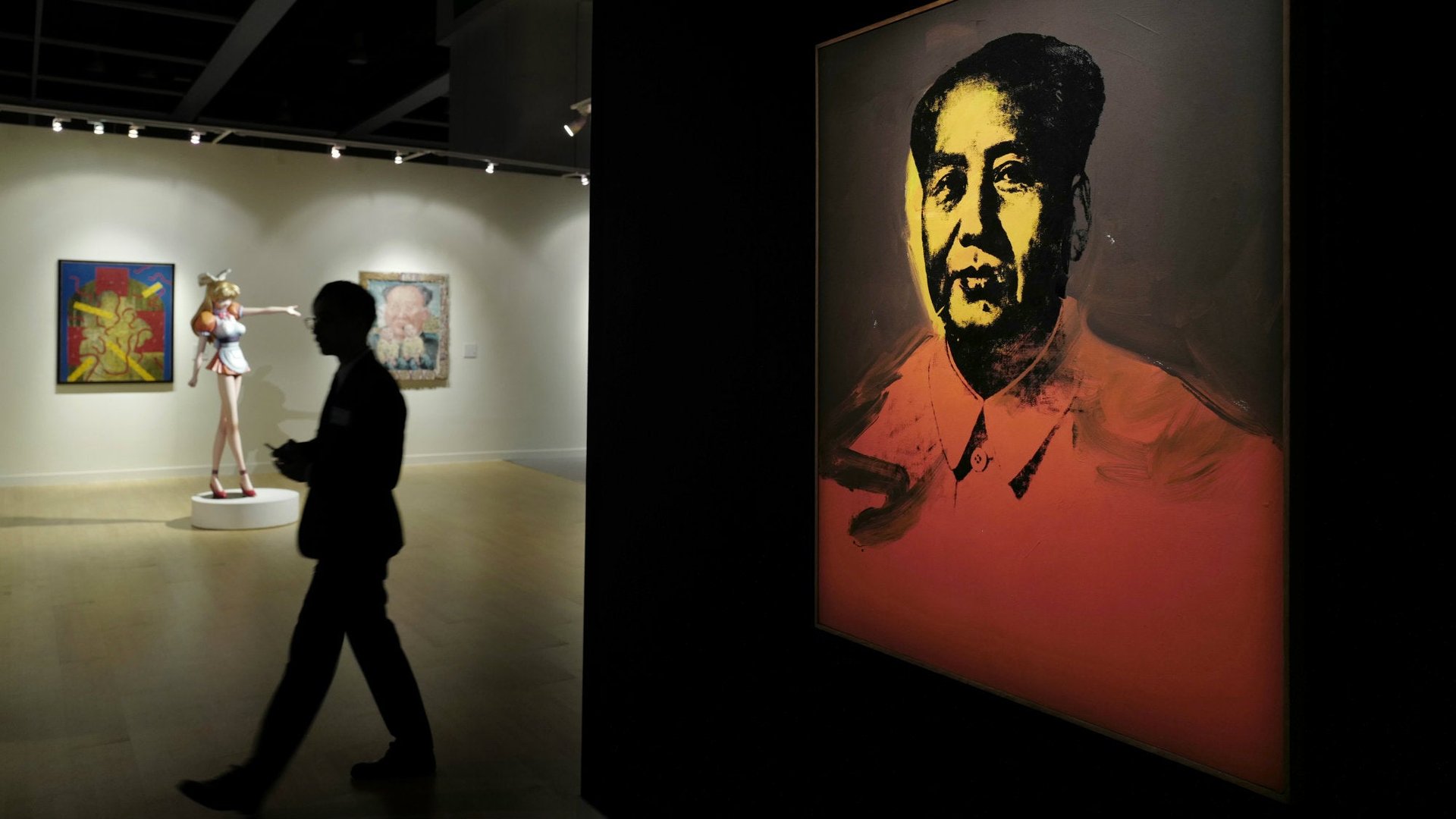China’s economic rise, as explained by Andy Warhol and Mao Zedong
In the 1970s, Andy Warhol painted nearly 200 portraits of Chinese communist leader Mao Zedong. One of those paintings, completed in 1973 and simply titled ”Mao,” was sold to an unnamed Asian collector for $12.6 million at a Sotheby’s auction in Hong Kong on April 2. It was the first time one of Warhol’s Mao portraits was sold in China.


In the 1970s, Andy Warhol painted nearly 200 portraits of Chinese communist leader Mao Zedong. One of those paintings, completed in 1973 and simply titled ”Mao,” was sold to an unnamed Asian collector for $12.6 million at a Sotheby’s auction in Hong Kong on April 2. It was the first time one of Warhol’s Mao portraits was sold in China.
A lot has changed in China since Warhol painted “Mao.” Since 1978, when Mao’s successor Deng Xiaoping introduced market-based economic reforms, China’s GDP has grown at a rate of almost 10% per year. At around $8,280, China’s GDP per capita now ranks in the top half of countries, according to the latest World Bank estimates. Taken as a rough proxy for average income, around 1,500 typical Chinese workers would have to pool their annual paychecks to buy Warhol’s painting today.
Compare this with 1968, during the early stages of Mao’s Cultural Revolution, a devastating effort to rid Chinese society of all vestiges of capitalism and pre-communist culture. At that time, China’s GDP per capita was just $643 in the equivalent of today’s dollars. Back then, if every Chinese person received an equal share of GDP—a notion that would have pleased Mao—it would have taken almost 20,000 people’s yearly income to buy Warhol’s “Mao” at its current price.
Mao would probably be horrified that a painting of his likeness sold for such a large sum. He believed in a centrally controlled economy and collective ownership of wealth. If Mao’s ideology had survived his death, such a decadent display of capitalism would never have taken place on Chinese soil.